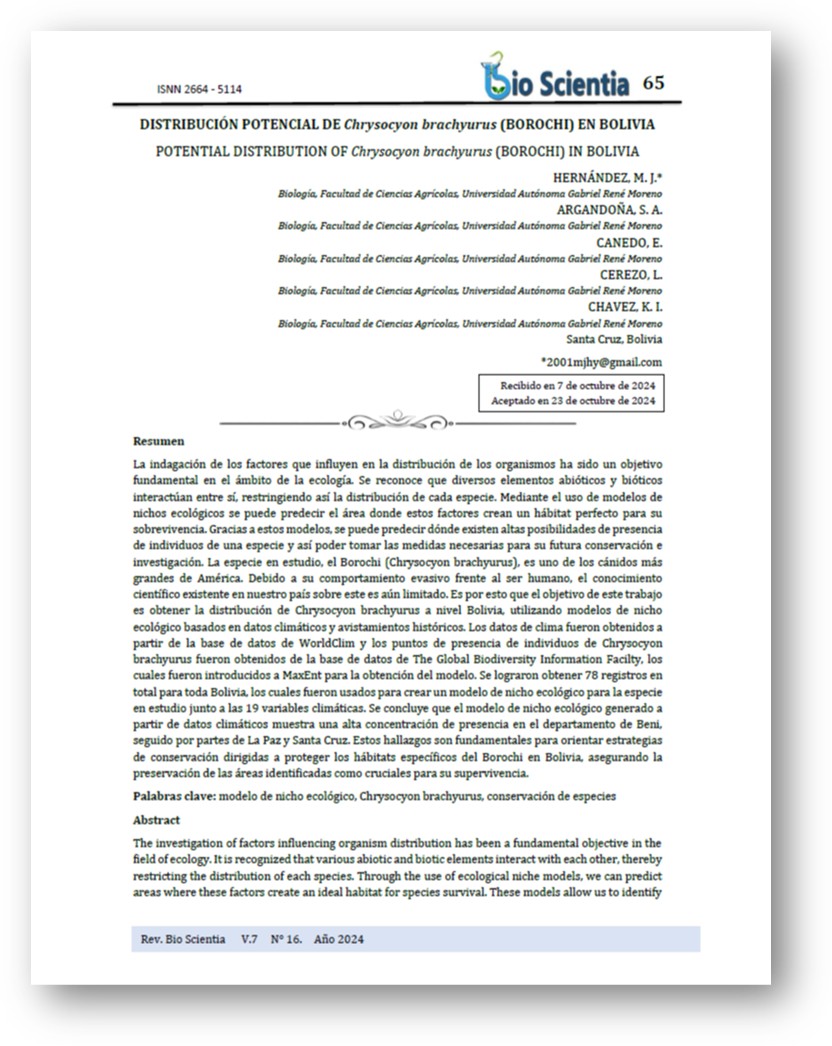DISTRIBUCIÓN POTENCIAL DE Chrysocyon brachyurus (BOROCHI) EN BOLIVIA
Palabras clave:
modelo de nicho ecológico, Chrysocyon brachyurus, conservación de especiesResumen
La indagación de los factores que influyen en la distribución de los organismos ha sido un objetivo fundamental en el ámbito de la ecología. Se reconoce que diversos elementos abióticos y bióticos interactúan entre sí, restringiendo así la distribución de cada especie. Mediante el uso de modelos de nichos ecológicos se puede predecir el área donde estos factores crean un hábitat perfecto para su sobrevivencia. Gracias a estos modelos, se puede predecir dónde existen altas posibilidades de presencia de individuos de una especie y así poder tomar las medidas necesarias para su futura conservación e investigación. La especie en estudio, el Borochi (Chrysocyon brachyurus), es uno de los cánidos más grandes de América. Debido a su comportamiento evasivo frente al ser humano, el conocimiento científico existente en nuestro país sobre este es aún limitado. Es por esto que el objetivo de este trabajo es obtener la distribución de Chrysocyon brachyurus a nivel Bolivia, utilizando modelos de nicho ecológico basados en datos climáticos y avistamientos históricos. Los datos de clima fueron obtenidos a partir de la base de datos de WorldClim y los puntos de presencia de individuos de Chrysocyon brachyurus fueron obtenidos de la base de datos de The Global Biodiversity Information Facilty, los cuales fueron introducidos a MaxEnt para la obtención del modelo. Se lograron obtener 78 registros en total para toda Bolivia, los cuales fueron usados para crear un modelo de nicho ecológico para la especie en estudio junto a las 19 variables climáticas. Se concluye que el modelo de nicho ecológico generado a partir de datos climáticos muestra una alta concentración de presencia en el departamento de Beni, seguido por partes de La Paz y Santa Cruz. Estos hallazgos son fundamentales para orientar estrategias de conservación dirigidas a proteger los hábitats específicos del Borochi en Bolivia, asegurando la preservación de las áreas identificadas como cruciales para su supervivencia.



